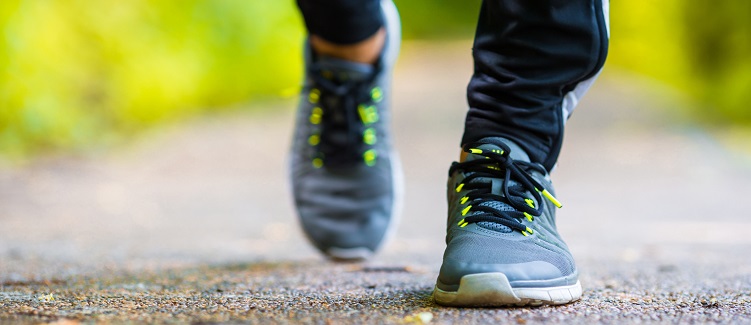Updated July 12, 2021
Stiff joints, noisy joints, and decreasing flexibility may seem like normal, even expected parts of aging; however, physical activity like walking, yoga, and weight-bearing exercises can help improve the strength and flexibility of your joints.
In fact, activities as simple as brisk walking can improve your joint function and relieve minor pain. Learn more about the connection between exercise and joint health.
Never Miss a Beat!
Subscribe to Our HealthBeat Newsletter!
Thank you for subscribing!
You can now select the specific newsletters you'd like to receive.
You are already subscribed.
Subscribe to more newsletters in our email preference center.
Sorry, an error occurred. Please try again later.
Get Healthy Tips Sent to Your Phone!
What is a Joint?
Simply put, a joint is the connection between two bones.
Joints are supported by muscles and tendons and cushioned by cartilage and synovial fluid. Keeping your joints healthy means keeping your support muscles strong. Strong support muscles help push fluid through the joint, which keeps cartilage healthy and nourished.
Exercise and Joint Health
Even if you already have some pain in your knees, hips, or shoulders, you can still benefit from beginning an exercise regimen. In fact, exercise is one of the best ways to manage osteoarthritis and reduce pain. And studies show that exercise can help maintain or attain a healthy weight, which is crucial for joint health.
You should consult your primary care provider to see if you are healthy enough to exercise; but in general, a good mix of the following exercises can be beneficial for your joints.
Muscle Strengthening
Strengthening exercises build the muscle around your joints, adding support to ease the burden on those joints and reduce discomfort. To get started, try lifting weights, using resistance bands, or attending a group strength-training class.
Cardiovascular Exercise
Cardio exercises are important to your overall health and wellness. They help improve stamina and energy levels, as well as reduce excess weight.
You can get a good cardio workout from a variety of activities, such as walking, dancing, hiking, shooting basketball, playing tennis or pickleball, or swimming. Start at a slower pace and continue to increase the duration and intensity of your cardio workout as you improve over time. Choose an activity that’s enjoyable to keep yourself interested in training.
Balance and Flexibility
Balance exercises can help prevent falls, and flexibility exercises can reduce stiffness. Yoga, Tai Chi, stretching, standing on one foot, walking backwards, or heel and toe walking all can help you develop increased flexibility and balance.
To schedule an appointment with one of our orthopaedic experts or to learn more about improving your joint health, call 1-866-987-6784 or submit a form online.
About UPMC Orthopaedic Care
When you are dealing with bone, muscle, or joint pain, it can affect your daily life. UPMC Orthopaedic Care can help. As a national leader in advanced orthopaedic care, we diagnose and treat a full range of musculoskeletal disorders, from the acute and chronic to the common and complex. We provide access to UPMC’s vast network of support services for both surgical and nonsurgical treatments and a full continuum of care. Our multidisciplinary team of experts will work with you to develop the treatment plan that works best for you. Our care team uses the most innovative tools and techniques to provide better outcomes. We also are leaders in research and clinical trials, striving to find better ways to provide our patients care. With locations throughout our communities, you can find a provider near you.
